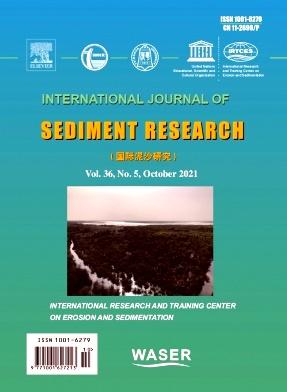基于人工神经网络的森林公路生态土坡稳定技术评价
IF 3.5
2区 环境科学与生态学
Q2 ENVIRONMENTAL SCIENCES
引用次数: 0
摘要
本研究从控制侵蚀和径流的角度考察了不同稳定技术在森林道路采伐边坡上实施的有效性。在示例道路上的研究地块上应用了木材生产残留物,加氢播种和黄麻土工布处理。在不同坡度为20°、30°和40°的研究样地上测量了侵蚀量和径流量。然后,比较了从地块测量的侵蚀量和径流量,以确定稳定技术在切坡上的性能。在求解过程中,采用机器学习算法之一的人工神经网络(ANN)模型对森林道路采伐边坡的产沙量进行预测。在未处理、黄麻土工布、加氢播种和木材生产残留物的对照区,从最高到最低三个坡度的平均产沙量分别为6.41、1.16、0.65和0.45 g/m2。三种径流量的坡度等级从高到低分别为6.82、3.71、1.64和1.30 mm/m2,分别用于对照地块、黄麻土工布、加氢播种和木材生产残留物。与对照区相比,木材生产残留物处理、加氢播种处理和黄麻土工布处理的产沙量分别减少了14倍、10倍和5倍。另一方面,木材生产残留物、加氢播种和黄麻土工布的使用分别减少了径流量的5倍、4倍和2倍。结果发现,与黄麻土工布处理相比,木材生产残留物和加氢播种处理可以更有效地减少径流和泥沙产量。人工神经网络在预测产沙量方面取得了较高的精度,可以作为评价土坡稳定技术的有效方法。本文章由计算机程序翻译,如有差异,请以英文原文为准。
Evaluation of eco-friendly soil slope stabilization techniques for forest roads by using an Artificial Neural Network (ANN)
In this study, the effectiveness of different stabilization techniques implemented on the forest road cut slopes was investigated in terms of controlling erosion and runoff. Wood production residues, hydroseeding, and jute geotextile treatments were applied on study plots located on the example road. The amount of erosion and runoff were measured on the study plots which were established for different slope grades of 20°, 30°, and 40°. Then, the amount of erosion and runoff measured from the plots were compared to determine the performance of stabilization techniques on the cut slope. In the solution process, an Artificial Neural Network (ANN) model, which is one of the machine learning algorithms, was used to predict sediment yield from forest road cut slopes. The sediment yields averaged over the three slope grades from highest to lowest were measured as 6.41, 1.16, 0.65, and 0.45 g/m2 in the control plot with no treatment, jute geotextile, hydroseeding, and wood production residues, respectively. The averaged over the three runoff amounts slope grades from the highest to the lowest were determined as 6.82, 3.71, 1.64, and 1.30 mm/m2 in control the plot, jute geotextile, hydroseeding, and wood production residues, respectively. Comparing to the control plot, wood production residues, hydroseeding, and jute geotextile treatments reduced the sediment yields by 14, 10, and 5 times, respectively. On the other hand, wood production residues, hydroseeding, and jute geotextile applications reduced the runoff amount by 5, 4, and 2 times, respectively. As a result, it was found that wood production residues and hydroseeding treatment can be more efficient in reducing the amount of runoff and sediment yield compared to the jute geotextile treatment. The ANN method achieved high accuracy in predicting sediment yield and it was concluded that the ANN can be used as an effective method to evaluate soil slope stabilization techniques.
求助全文
通过发布文献求助,成功后即可免费获取论文全文。
去求助
来源期刊
CiteScore
6.90
自引率
5.60%
发文量
88
审稿时长
74 days
期刊介绍:
International Journal of Sediment Research, the Official Journal of The International Research and Training Center on Erosion and Sedimentation and The World Association for Sedimentation and Erosion Research, publishes scientific and technical papers on all aspects of erosion and sedimentation interpreted in its widest sense.
The subject matter is to include not only the mechanics of sediment transport and fluvial processes, but also what is related to geography, geomorphology, soil erosion, watershed management, sedimentology, environmental and ecological impacts of sedimentation, social and economical effects of sedimentation and its assessment, etc. Special attention is paid to engineering problems related to sedimentation and erosion.

 求助内容:
求助内容: 应助结果提醒方式:
应助结果提醒方式:


